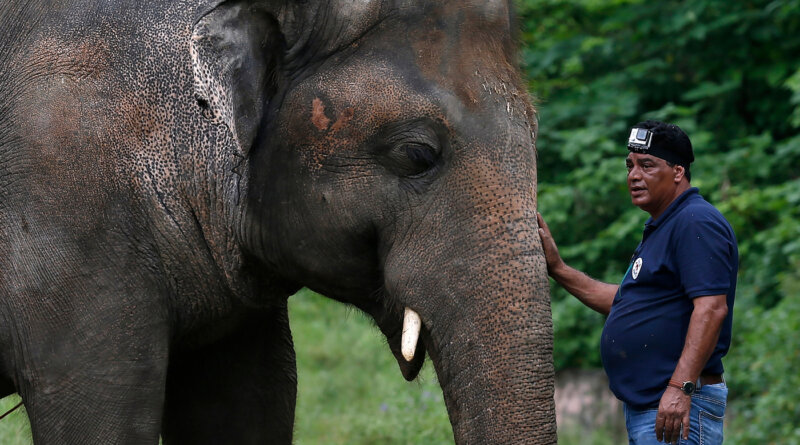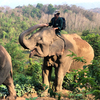Vet Describes What It Was Like To Rescue Kaavan The Elephant : NPR

Dr. Amir Khalil, a veterinarian from the international animal welfare organization Four Paws International, comforts Kaavan during his examination at the zoo in Islamabad, before Kaavan is transported to Cambodia.
Anjum Naveed/NPR
hide caption
toggle caption
Anjum Naveed/NPR
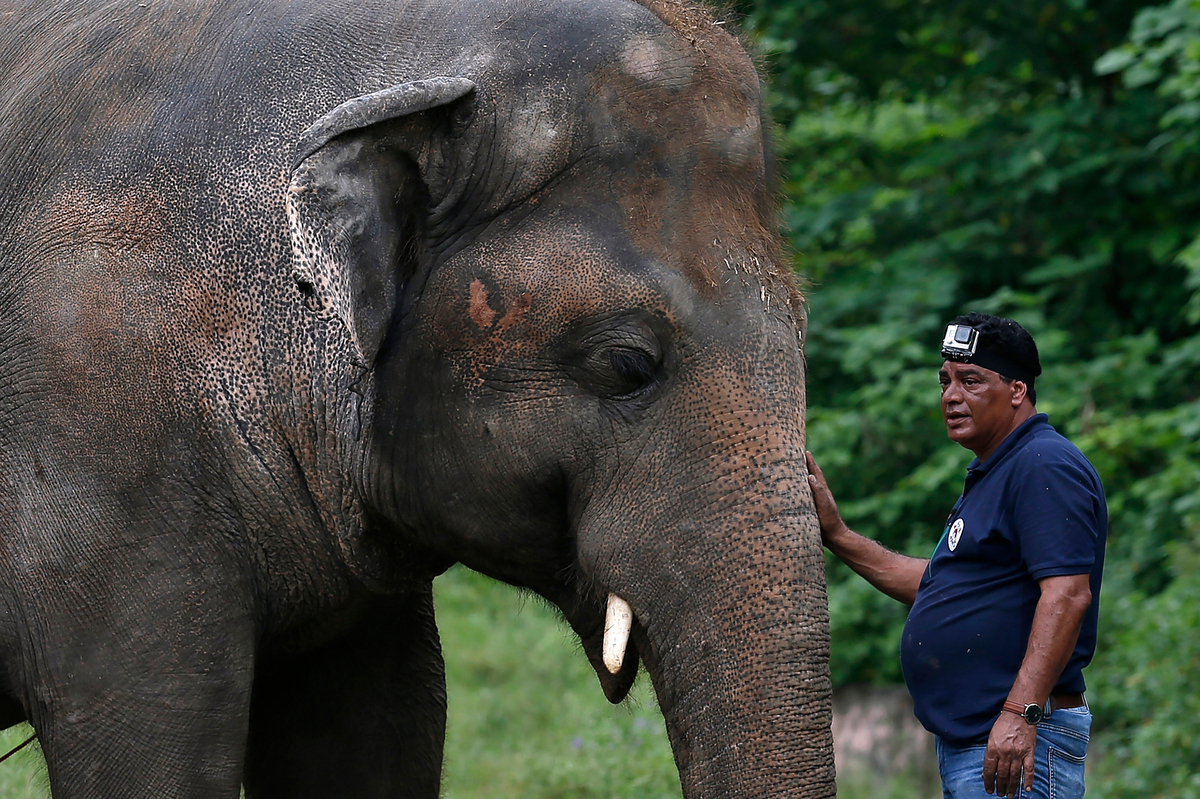
Dr. Amir Khalil, a veterinarian from the international animal welfare organization Four Paws International, comforts Kaavan during his examination at the zoo in Islamabad, before Kaavan is transported to Cambodia.
Anjum Naveed/NPR
Dr. Amir Khalil is no stranger to helping animals out of really bad situations. The 55-year-old Egyptian-born veterinarian, who works with the Vienna-based animal welfare group Four Paws International, has been rescuing animals from crumbling zoos and conflict zones such as Syria and the Gaza Strip for more than two decades.
“We go to places where the logic doesn’t exist,” Khalil told NPR last year. “The government doesn’t exist. No one cares. And where no one will believe you are coming to save animals.”
Now he can add moving an elephant by plane between countries during a deadly global pandemic to his storied resume. Khalil led the team that this week transferred a 37-year-old male Asian elephant named Kaavan from confinement in a decrepit zoo in Islamabad, Pakistan, to a conservation park in Cambodia.
Moving Kaavan was already a difficult mission logistically and politically, Khalil says — and the coronavirus pandemic made it even more challenging. The health and safety of the team was “the main priority,” he says, as they worked to shift the 5-ton pachyderm from the ill-equipped Islamabad zoo that’s been his home for over 30 years.

Officials and journalists look at Kaavan at the Islamabad zoo in July.
Anjum Naveed/AP
hide caption
toggle caption
Anjum Naveed/AP

Officials and journalists look at Kaavan at the Islamabad zoo in July.
Anjum Naveed/AP
Born in Sri Lanka, Kaavan arrived in Pakistan as one-year-old calf, a state gift during military rule in the 1980s, after the military dictator’s young daughter expressed a fondness for elephants. He ended up in the zoo, where he spent the next three decades “chained and mistreated,” Khalil says.
“They forced him sometimes to drink whisky and vodka, even in an Islamic country where alcohol is forbidden,” he tells NPR.
In 2012, Kaavan’s enclosure mate, a female elephant named Saheli, died. Her body was left lying with Kaavan for days before it was taken away. He’s been alone ever since — earning him the nickname of “world’s loneliest elephant.”
When Khalil first met Kaavan in 2016, during a visit to assess the condition of the zoo and its animals, he says the elephant was aggressive, depressed and obese.
Not long after Khalil’s visit, American pop legend Cher learned of Kaavan’s situation. Along with her own charity, Free the Wild, and other animal rights groups, she launched a campaign to close the Islamabad zoo and relocate the animals.
A Pakistani court finally ordered the zoo’s closure in May and put Khalil in charge of figuring out where and how to relocate Kaavan.
“It was an honor,” says Khalil.
He recommended relocating Kaavan to Cambodia’s Kulen Prom Tep Wildlife Sanctuary, a facility of over 30,000 acres outside Siem Reap. “Cambodia was a very good space where we could build the appropriate facility for the elephant’s quarantine and rehabilitation,” he says.
The park already has three female elephant residents, and they will be important for Kaavan’s rehabilitation and socialization, he says.
Khalil and his team worked with Pakistani officials, Cambodian officials and, of course, Kaavan himself to prepare the elephant for his incredible journey: a more than 7-hour flight, followed by a long drive to the sanctuary. The entire process cost some $400,000, with the flight donated by the Eric S. Margolis Foundation.
Social media was abuzz with photos and videos showing Kaavan taking his very first steps out of the transport crate and into his new home on Monday night.
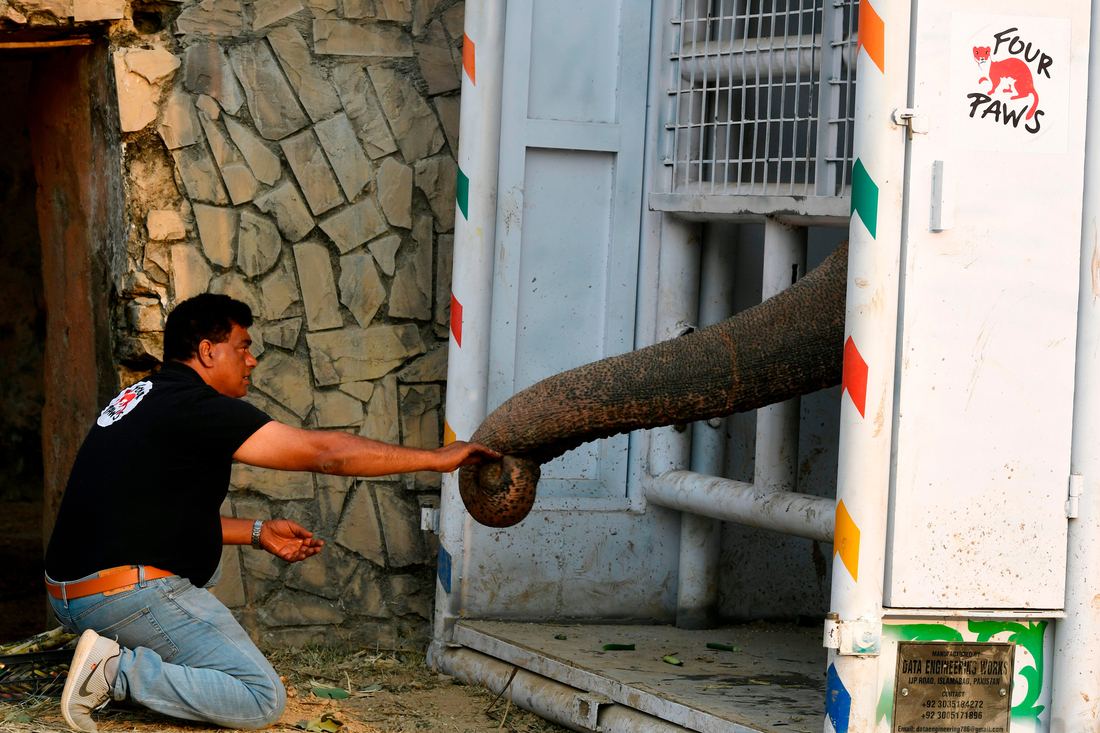
Khalil feeds Kavaan in a transport crate in November to get him used to it before traveling.
Aamir Qureshi/AFP via Getty Images
hide caption
toggle caption
Aamir Qureshi/AFP via Getty Images

Khalil feeds Kavaan in a transport crate in November to get him used to it before traveling.
Aamir Qureshi/AFP via Getty Images
That moment “was great,” an emotional Khalil says, “because I had a special contact and special bond with the elephant.”
Like anyone who moves to a new home, Kaavan is a bit restless and stressed right now, he says.
“But surely in the coming days, he will feel much better and calmer,” he says.
The elephant will be slowly introduced to the full habitat in the coming weeks.
“The life of one human or one elephant is so important and we hope Kaavan inspires people,” Khalil says. “What Kaavan did for animal welfare on a global level is important. He deserves to be free — it’s all about humanity.”
NPR reached Khalil in Cambodia a day after Kaavan’s transfer. Highlights of the interview have been edited and condensed for clarity.
On how a Sinatra standard helped move Kaavan

Khalil asks members of the media to stay away from a crate carrying Kaavan.
Anjum Naveed/AP
hide caption
toggle caption
Anjum Naveed/AP

Khalil asks members of the media to stay away from a crate carrying Kaavan.
Anjum Naveed/AP
So, to move such a giant, you need a lot of logistic work. We had to start by moving him from such a small enclosure in a zoo where no big trucks can enter, we had to build a crate, we need a team to train the elephant. And we need to find a proper plane, because any other place could not take Kaavan. We wanted to take the biggest plane on earth, an Antonov, but this was very expensive.
So we worked on the weight of the elephant and the elephant lost some [hundreds of] kilograms and we were able to modify the crate to be smaller. This allowed us to take a Russian airplane, an Ilyushin. It’s huge because the elephant is big, very tall. We needed an airplane with a big door.
The team worked very hard in the last few months to change the weight of the elephant, to train the elephant for the transport box. And somehow I found a way to calm the elephant by music. He loves Frank Sinatra music: My Way. I have ugly voice, very bad, but I only have one fan, Kaavan, but that’s it for me.
On putting an elephant on a plane
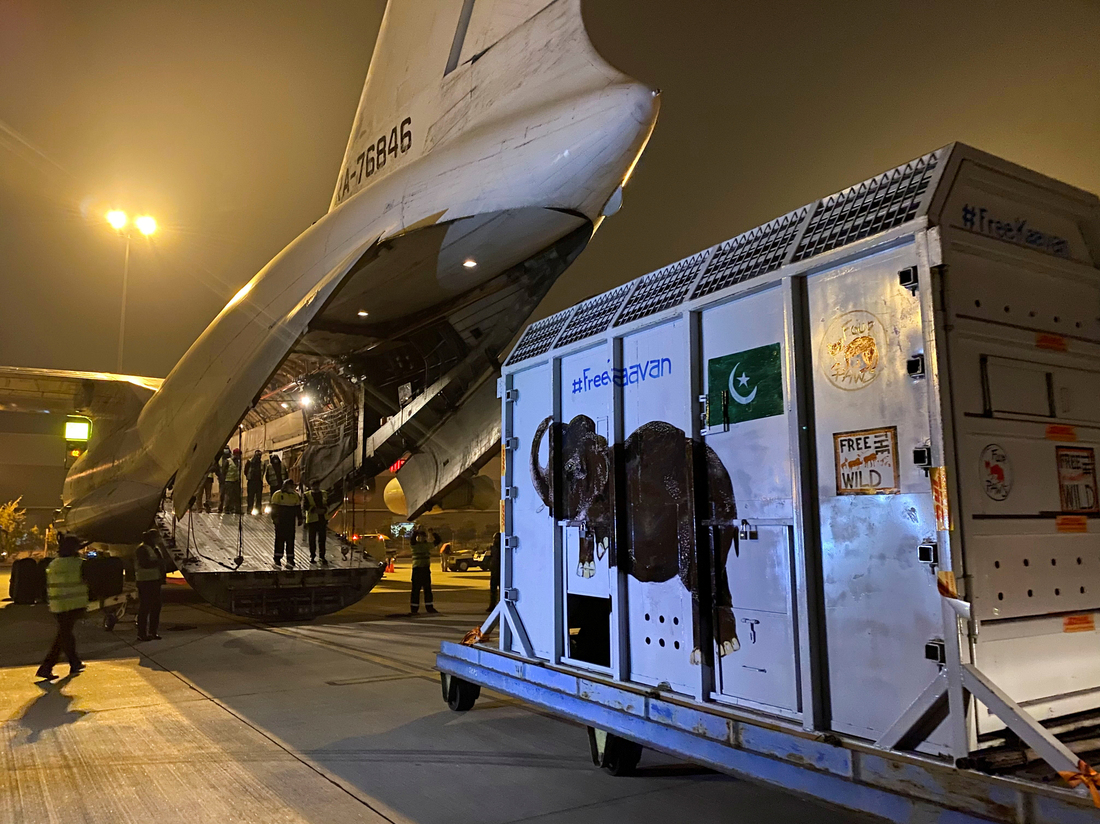
A crate carrying Kaavan at the Islamabad International Airport.
Saiyna Bashir/Reuters
hide caption
toggle caption
Saiyna Bashir/Reuters
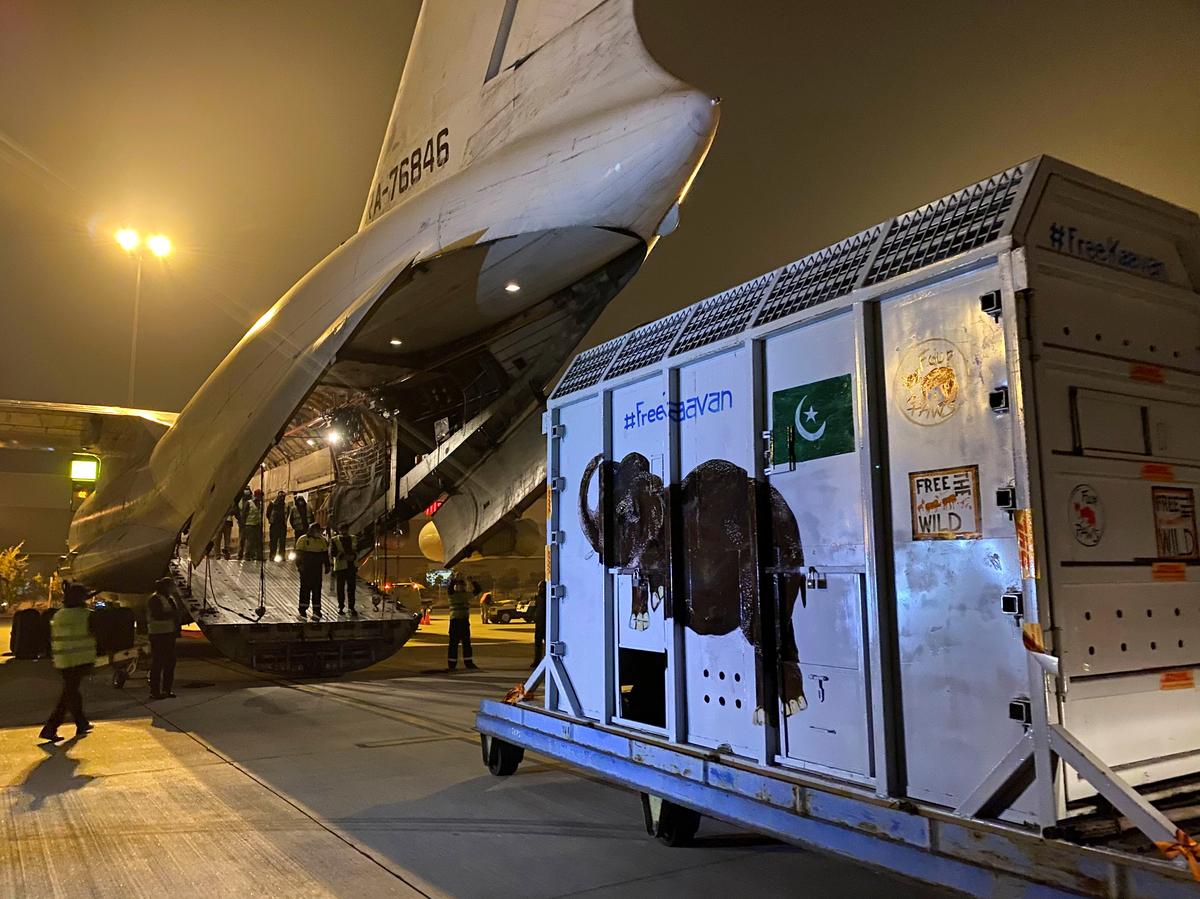
A crate carrying Kaavan at the Islamabad International Airport.
Saiyna Bashir/Reuters
You need food for the elephant in the plane. If the elephant moves one step forward or back, the pilot will not be happy because the airplane will move. We were supported by the [Pakistani] army, logistics to move and supply the crane which will carry the elephant and the transport box together. We had a military escort to the airport by the army because if there was an accident, it would be a disaster.
We succeeded in bringing him into the plane and he was calm. We had to feed him from time to time, I had to sing to him. He slept a little, but it was for him a lot of excitement.
On the politics of moving Kaavan

Kaavan (left) touches his trunk with the trunk of another elephant at the Kulen Prom Tep Wildlife Sanctuary in Cambodia.
Four Paws
hide caption
toggle caption
Four Paws
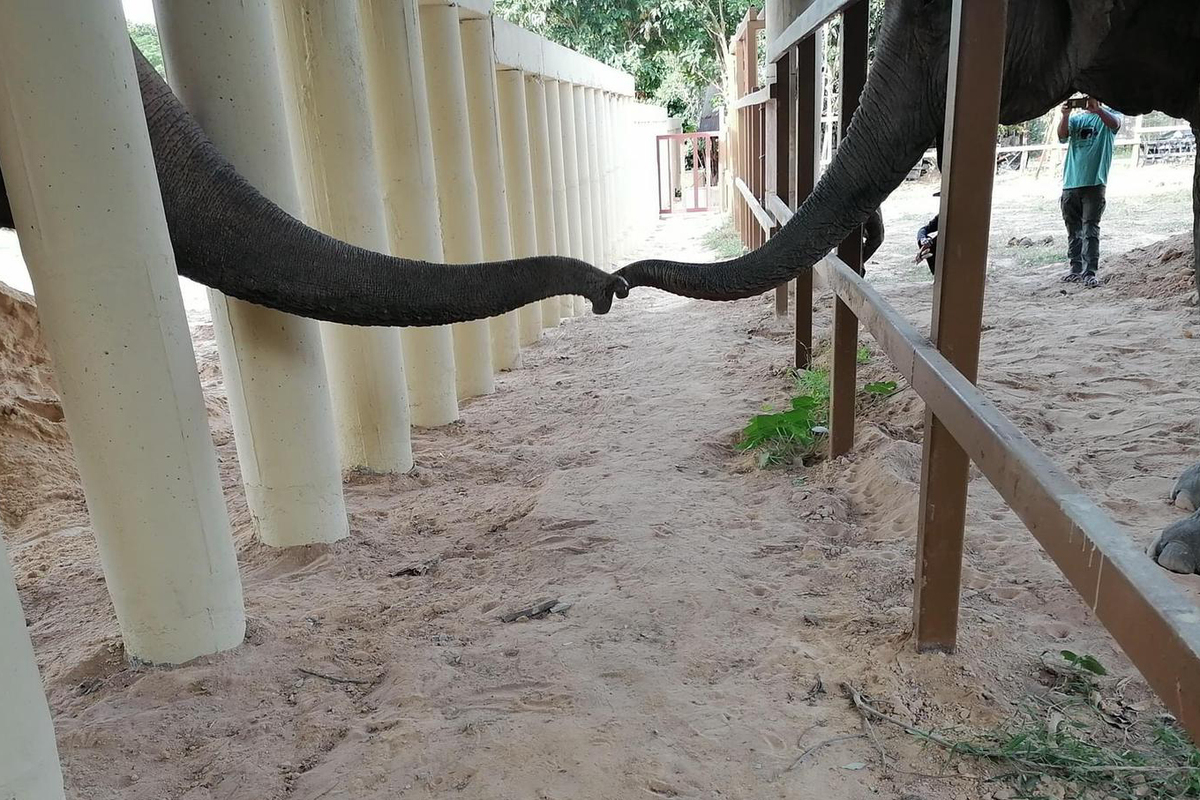
Kaavan (left) touches his trunk with the trunk of another elephant at the Kulen Prom Tep Wildlife Sanctuary in Cambodia.
Four Paws
So it was a big political problem [in Pakistan] to lose the elephant, to give away the elephant because they aren’t able to care for the elephant. But on the other hand, all of the animal lovers agree there was no qualified staff to care for the elephant. They even recommended building a sanctuary for the elephant in Pakistan. But to keep one Asian elephant in Pakistan, in a big sanctuary, it’s like you have a big island for you alone. It’s beautiful, but you’ll be alone.
The elephant was a presidential gift when he was a baby. So the president of Pakistan and the first lady came to say “goodbye” and “safe trip” to Kaavan. They have to hand over the presidential gift because he had to be retired.
By this week, it was politically possible to say that Pakistan would not lose face. The elephant worked over 35 years, filed for retirement and this was great.
On Kaavan’s new life
After we arrived, Cher was waiting for him, and a lot of journalists. Monks came to bless him. After this, he moved to the sanctuary. He’s in a new enclosure where he’ll stay for a while and he has three [elephant] ladies as neighbors. And [Tuesday] morning, it was the first time his trunk touched another trunk from one of the ladies. Which was touching.
I will stay one week with Kaavan and then fly back to rescue two bears from Islamabad to Jordan. I’m sure I will come back to visit Kaavan soon. I am happy for Kaavan. Now he will be a happier elephant, and I will be a rescue doctor again.

